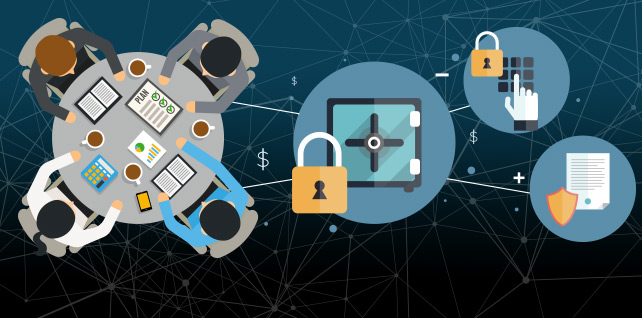Every IT leader dreams of implementing the perfect cybersecurity policy. Employees would follow every security best practice with flawless execution, the entire company would know how to identify phishing scams, and passwords would take an infinity to crack. Above all, sensitive company information would always be at the forefront of the organization’s responsibility.
Threats of malware, hackers, and user error? With a perfect plan, they could be things of the past.
Unfortunately, this scenario is almost impossible to achieve. Barred by a lack of resources, whether it’s time, money, or people, most organizations settle with addressing their top security needs. They finalize their data breach response plan, design and implement a solid enterprise process with proper file encryption, and audit their systems for proper regulation compliance.
And yet, in focusing on these areas, many security teams overlook their strongest asset: their employees.
Human error is the leading cause in today’s data breaches. From simply not knowing their company’s security practices to opening a malicious email at their workstation, employees often fall victim to attacks that leave the company vulnerable—or worse. But what if those employees were given security awareness training that inspired and empowered them? With the right encouragement, users can go from being the weakest link in a company’s cybersecurity to its biggest security advocate.
Here are four ways you can use security awareness training to transform and empower your employees:
1. Start Security Awareness Training from Day One
The easiest way to promote good security best practices is to talk about them from day one. Don’t just assume new employees will know the rules; they may have had different ones in their previous role. Instead, consider making security awareness a part of discussion during employee onboarding and initial job training. Walk new hires through the practices your company follows. Do you require employees to lock their computers when they leave their desk? Should USB drives be stored in a locked desk drawer? Are there any policies surrounding mobile devices they should know about?
The more you cover up front, the more inclined employees will be to remember, and follow, company practices as part of their daily routine.
2. Use Tools to Teach Your Employees
If you have the resources, think about going beyond basic security training and infrequent cybersecurity reminders at company meetings. Weave security discussion and practices through common work platforms. Send articles to your employees so they can read up on the latest security practices, or use an email phishing tool to show employees how easy it is to fall for a malicious email. Demonstrate what they should look for and how they should respond when faced with real threats.
By letting your employees participate and interact with your security awareness training, cybersecurity becomes a reality, not just something the IT team does to keep your data safe.
3. Make Security a Fun, Frequent Discussion
Talking about security can result in glazed looks and blank faces. Many people mistakenly believe that cybersecurity is boring, something that doesn’t apply to them because they hear it all the time. Changing passwords? Yawn. Multi-factor authentication? Eh. Identity theft and hacked accounts are things that happen to other people, right?
Engage your employees by making security fun—without losing the brevity of the discussion, of course. Encourage teams to talk about security during meetings, even if it’s just for a few minutes. Ask them their thoughts on recent security incidents in the industry, or get their opinion on what makes a strong password. If employees feel included in a company’s security practices, they’re more likely to be proactive in keeping their workstations safe and more likely to see security as a team effort, not just something that’s delegated to the CSO or system administrators.
4. Teach Employees How to be Safe at Home
The safety of an organization’s data is of utmost importance; it should be the main focus for all teams. However, it wouldn’t be remiss to also talk about the safety of personal data. Employees are holistic beings. They have important information in their lives, such as credit card numbers, 401k accounts, bank passwords, and SSNs, that needs to be protected.
Take this opportunity to help them! Doing small things, like sending employees reminders of how to keep safe during tax season or updating them on phishing attacks that are circulating in the public (like fake Google doc requests), will help them solidify good security habits wherever they go.
If you’re looking for more ways to boost your organization’s cybersecurity practices, this on-demand webinar might be for you. “Lessons from the Field: 7 Steps to Proactive Cybersecurity” covers how to implement powerful security awareness training and manage resources in your organization.





 We are in our 11th year, and Global InfoSec Awards are incredibly well received – helping build buzz, customer awareness, sales and marketing growth opportunities, investment opportunities and so much more.
We are in our 11th year, and Global InfoSec Awards are incredibly well received – helping build buzz, customer awareness, sales and marketing growth opportunities, investment opportunities and so much more.